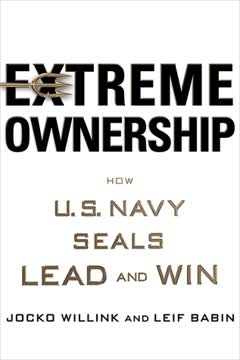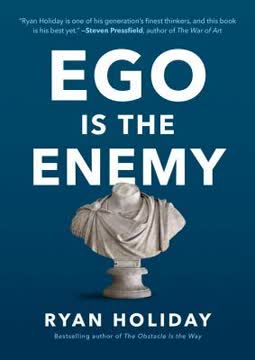重点摘要
1. 掌握法律论证的基本原则
“经验无疑是伟大的老师,但如果所培养和磨练的是坏习惯,那就可能适得其反。”
逻辑推理至关重要。 最具说服力的法律论证遵循三段论结构,包括一个主要前提(控制规则)、一个次要前提(适用该规则的事实)和一个逻辑结论。这一结构帮助法官轻松跟随你的推理,并看到你的案件事实如何与既定法律原则相一致。
了解你的听众并调整你的方法。 不同的法官有不同的司法哲学和偏好。有些法官可能主要关注法律文本,而其他法官则可能更重视政策影响。研究你将要出庭的法官,并相应调整你的论点。此外,理解审判和上诉辩护之间的区别,因为它们需要不同的技能和策略。
通过诚实和准确建立可信度。 切勿夸大你的案件或歪曲事实或先例。法官重视那些对自己立场的优缺点都诚实直言的律师。承认不利点,并解释为什么这些点并不最终削弱你的案件。这种方法能够在法庭上建立信任,增强你的整体说服力。
2. 以清晰和精准撰写引人注目的书面简报
“清晰的表达是合理的,因为它确保你会被理解。但在我们的对抗性系统中,它还发挥了额外的功能。你的论点越清晰,对手就越难以曲解它们。”
将清晰性放在首位。 使用简单的语言和直接的句子结构来传达你的论点。避免法律术语、不必要的拉丁短语和复杂的表达,这些可能会让读者感到困惑或沮丧。记住,你的目标是让复杂的想法对法庭易于理解。
有效地构建你的简报:
- 以清晰的问题陈述开头
- 提供简明的论点摘要
- 呈现结构良好的事实陈述
- 逻辑地展开你的法律论点
- 以具体的救济请求结束
使用视觉元素增强可读性:
- 使用有意义的标题和副标题
- 在适当时使用项目符号和编号列表
- 考虑在附录中包含相关的图表或图示
在编辑你的作品时要毫不留情,消除不必要的词汇和重复的论点。一份简洁、精心制作的简报更有可能被法庭认真阅读和理解。
3. 精心准备口头辩论
“口头辩论中最困难的元素是意外——对手的论点或法庭提出的未预料到的问题。”
掌握记录和相关案例。 彻底审查所有相关事实、程序历史和法律先例。深入理解你案件的优缺点以及对手论点的强弱。这种全面的知识将使你在口头辩论中自信地应对意外问题和挑战。
预见潜在的问题和反对意见:
- 与同事进行模拟法庭练习,扮演法官角色
- 准备简洁的答案以应对可能的问题
- 制定应对案件弱点的策略
有效地组织你的材料:
- 创建主要观点的清晰大纲
- 准备一份“备忘单”,包含关键事实、案例引用和记录参考
- 制定快速访问相关信息的系统
练习以不同的顺序呈现你的论点,以提高你的灵活性。这将帮助你无缝适应法庭的提问方式,并保持连贯的陈述。
4. 自信而从容地进行有说服力的口头辩论
“要保持对话的风格,但不要过于亲昵。”
与法庭建立尊重的关系。 目标是营造一种专业而引人入胜的语气,就像你在向一位受人尊敬的资深同事解释案件一样。与所有法官保持眼神交流,而不仅仅是与提问的法官或首席法官。
有效口头陈述的关键要素:
- 清晰地说话,语速适中
- 调整语调以强调重要观点
- 自然的手势要适度使用,以增强你的信息
- 保持良好的姿态和自信的举止
战略性地构建你的论点:
- 以简要概述你的关键点开头
- 先提出你最强的论点
- 在主题之间使用清晰的过渡
- 以有力的总结和具体的救济请求结束
如果法庭的问题使论点朝不同方向发展,准备好放弃你原定的结构。灵活性和应变能力对于与法官保持有效对话至关重要。
5. 有效应对法官的问题和法庭动态
“欢迎提问。”
将法官的提问视为机会。 法官的提问使你能够解决法庭的具体关切并澄清任何误解。这也提供了对法官思维过程和对你案件潜在怀疑领域的洞察。
有效处理问题的策略:
- 仔细倾听,确保在回答之前理解问题
- 直接而简洁地回应,适时以“是”或“否”开头
- 如果你不知道答案,承认并表示稍后提供信息
- 利用问题作为强调你论点关键点的跳板
优雅地应对挑战性情况:
- 如果某位法官特别敌对或坚持,保持冷静和尊重
- 面对假设问题时,认真对待,而不是轻视
- 如果需要纠正之前的陈述,及时而坦诚地进行
记住,你的目标是帮助法庭做出正确的决定,而不是与个别法官“争胜”。在整个程序中保持合作和乐于助人的态度。
6. 建立值得信赖和专业的声誉
“我们更容易被我们钦佩的人说服,而不是被我们厌恶的人。”
在与法庭的所有互动中培养诚信。 始终对事实、法律以及你案件的优缺点保持严格的诚实。法官会记住那些误导他们或夸大主张的律师,这种声誉可能会损害你在未来案件中的可信度。
专业行为的关键方面:
- 准时并充分准备所有法庭出庭
- 穿着得体,保持保守的商务着装
- 尊重法庭工作人员、对方律师和所有相关方
- 严格遵循所有法庭规则和程序
在法律界建立积极的关系:
- 参与公益工作和律师协会活动
- 指导初级律师和法学生
- 在法律期刊上发表深思熟虑的文章
记住,你的声誉是通过持续的道德行为和高质量的工作逐步建立的。强大的专业声誉可以增强你的说服力,并为你在法律职业中打开更重要的机会之门。
7. 通过实践和反思不断提升你的辩护技能
“从错误中学习。”
寻求多样化的辩护经验。 寻找机会在不同的论坛上辩论不同类型的案件。这种广泛的经验将帮助你培养适应能力和更全面的技能。
持续改进的方法:
- 定期参加关于辩护技能的继续法律教育(CLE)课程
- 观看熟练的辩护者的表现并分析他们的技巧
- 记录并回顾自己的表现(如果可能)
- 征求同事、法官(在适当情况下)和客户的反馈
培养成长心态:
- 将挫折视为学习机会
- 关注法律写作和口头辩护技巧的发展
- 对建设性的批评持开放态度,并积极改进
记住,成为一名优秀的辩护者是一个终身的旅程。即使是最有经验的律师也会不断提升自己的技能,适应不断变化的法律环境。接受持续改进的挑战,并将每个案件视为磨练技艺的机会。
最后更新日期:
FAQ
What's "Making Your Case: The Art of Persuading Judges" about?
- Overview: "Making Your Case: The Art of Persuading Judges" by Bryan A. Garner and Antonin Scalia is a comprehensive guide on effective legal advocacy, focusing on both written and oral arguments.
- Purpose: The book aims to equip lawyers with the skills necessary to persuade judges by providing practical advice on legal reasoning, brief writing, and oral argumentation.
- Structure: It is divided into sections covering general principles of argumentation, legal reasoning, briefing, and oral argument, each offering detailed strategies and techniques.
- Audience: While primarily targeted at legal professionals, the book is also valuable for anyone interested in understanding the intricacies of legal persuasion.
Why should I read "Making Your Case: The Art of Persuading Judges"?
- Expert Insights: Co-authored by a Supreme Court Justice and a legal writing expert, the book offers authoritative insights into the art of legal persuasion.
- Practical Advice: It provides actionable strategies for improving both written and oral advocacy, making it a practical resource for lawyers at any stage of their career.
- Comprehensive Coverage: The book covers a wide range of topics, from understanding your audience to mastering courtroom terminology, ensuring a well-rounded approach to legal advocacy.
- Enhance Persuasion Skills: By reading this book, you can enhance your ability to construct compelling arguments and effectively communicate them to judges.
What are the key takeaways of "Making Your Case: The Art of Persuading Judges"?
- Know Your Audience: Understanding the judge's perspective and judicial philosophy is crucial for tailoring your arguments effectively.
- Clarity and Brevity: Clear and concise communication is emphasized throughout the book as essential for persuasive legal writing and speaking.
- Preparation is Key: Thorough preparation, including mastering the record and anticipating questions, is vital for successful oral arguments.
- Ethical Advocacy: The book stresses the importance of honesty and integrity in legal advocacy, advising against overstating cases or misrepresenting facts.
What are the best quotes from "Making Your Case: The Art of Persuading Judges" and what do they mean?
- "Experience is undoubtedly a great teacher, yet it may be counterproductive if what has been cultivated and refined are bad habits." This quote emphasizes the importance of cultivating good habits in legal practice, as experience alone is not enough if it reinforces ineffective methods.
- "No rules in the handbooks are capable in themselves of making brilliant performances out of those who intend to dispense with practice and exercise." It highlights the necessity of practice and preparation in achieving excellence in legal advocacy.
- "The proper role of a judge is to do justice between the parties before him." This quote reflects the book's focus on justice and fairness as central to the judicial process.
- "Persuasive argument neither comes to an abrupt halt nor trails off in a grab-bag of minor points." It underscores the importance of a strong, focused conclusion in legal arguments.
How does "Making Your Case" advise on preparing for oral arguments?
- Know the Record: The book emphasizes the importance of being thoroughly familiar with the case record to respond effectively to questions.
- Anticipate Questions: Preparing for potential questions from the bench is crucial, as it allows for more confident and effective responses.
- Practice Flexibility: Advocates should be ready to adapt their arguments based on the court's questions and focus during the oral presentation.
- Moot Courts: Conducting moot courts is recommended as a way to simulate the argument experience and refine responses to challenging questions.
What does "Making Your Case" say about the importance of knowing your audience?
- Judicial Philosophy: Understanding a judge's judicial philosophy helps tailor arguments to align with their reasoning and decision-making process.
- Courtroom Dynamics: Familiarity with the courtroom's culture and the judge's preferences can influence the presentation style and strategy.
- Personal Background: Knowing a judge's background, such as their previous rulings or interests, can provide insights into their potential biases or inclinations.
- Effective Communication: Tailoring communication to the judge's preferences and expectations enhances the persuasiveness of the argument.
What are the general principles of argumentation in "Making Your Case"?
- Jurisdiction: Ensure that the tribunal has jurisdiction before proceeding with arguments, as this is foundational to any legal case.
- Accuracy: Never overstate your case; be scrupulously accurate in presenting facts and legal precedents.
- Strongest Argument First: When possible, lead with your strongest argument to make a compelling first impression.
- Defensible Terrain: Occupy the most defensible terrain by selecting arguments that are easiest to support and most likely to succeed.
How does "Making Your Case" suggest handling questions during oral arguments?
- Welcome Questions: View questions as opportunities to clarify and strengthen your argument rather than as interruptions.
- Listen Carefully: Pay close attention to the questions to ensure accurate and relevant responses.
- Direct Answers: Begin answers with a clear "yes" or "no" before providing further explanation to maintain clarity.
- Avoid Evasion: Never postpone answering a question; address it directly to maintain credibility and respect.
What does "Making Your Case" recommend for effective brief writing?
- Objective: The primary objective of a brief is to make the court's job easier by presenting clear, concise, and well-organized arguments.
- Clarity and Brevity: Value clarity above all other elements of style, and strive for brevity to maintain the court's attention.
- Structure: Use captioned section headings and a logical structure to guide the reader through the argument.
- Avoid Jargon: Banish legal jargon and hackneyed expressions to enhance readability and comprehension.
How does "Making Your Case" address the use of legal reasoning?
- Syllogistic Thinking: Encourage thinking syllogistically to ensure logical consistency and clarity in legal arguments.
- Textual Interpretation: Know the rules of textual interpretation and begin with the words of the text to establish the major premise.
- Precedent Weight: Master the relative weight of precedents to effectively argue the applicability of case law.
- Policy Considerations: Consider the policy implications of legal arguments to demonstrate their broader impact and fairness.
What are the recommended sources for further reading in "Making Your Case"?
- General Dictionaries: The book recommends several dictionaries, including The American Heritage Dictionary and Merriam-Webster’s Collegiate Dictionary, for precise language use.
- Usage Guides: It suggests usage guides like H.W. Fowler's "A Dictionary of Modern English Usage" and Bryan A. Garner's "Garner’s Modern American Usage" for language refinement.
- Legal Writing Style: For legal writing, the book recommends "The Elements of Legal Style" by Bryan A. Garner and "Plain English for Lawyers" by Richard C. Wydick.
- Oral Argument: It lists resources like "The Winning Oral Argument" by Bryan A. Garner and "Supreme Court and Appellate Advocacy" by David C. Frederick for mastering oral advocacy.
What is the significance of the book's foreword and introduction?
- Historical Context: The foreword places the book within the historical context of legal advocacy, drawing on classical sources like Aristotle and Cicero.
- Purpose: It clarifies that the book aims to adapt the best earlier advice on judicial persuasion to modern American litigation.
- Disagreements: The authors acknowledge that respected authorities on judicial persuasion may disagree, and they present their own recommendations while noting these differences.
- Judicial Motivation: The introduction discusses the motivations of judges, emphasizing the importance of understanding what drives judicial decision-making to craft persuasive arguments.
评论
《论证技巧》受到法律专业人士和学生的高度评价,因为它提供了关于书面和口头辩护的实用建议。读者们欣赏其简洁易懂的风格,以及两位受人尊敬的法律专家提供的大量实用技巧。许多人发现这本书提升了他们的法律写作和论证能力。虽然有些人认为部分内容较为基础,但大多数人认为它是律师在任何阶段都不可或缺的参考书。书籍的组织结构和清晰度也常常受到赞扬。几位评论者指出,其适用性不仅限于法律领域,还可以广泛应用于一般的说服技巧。
Similar Books















